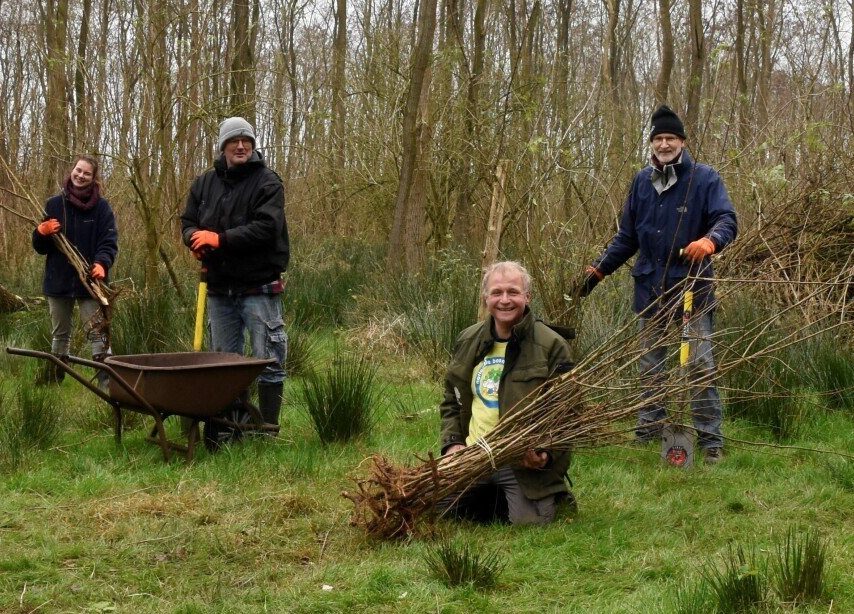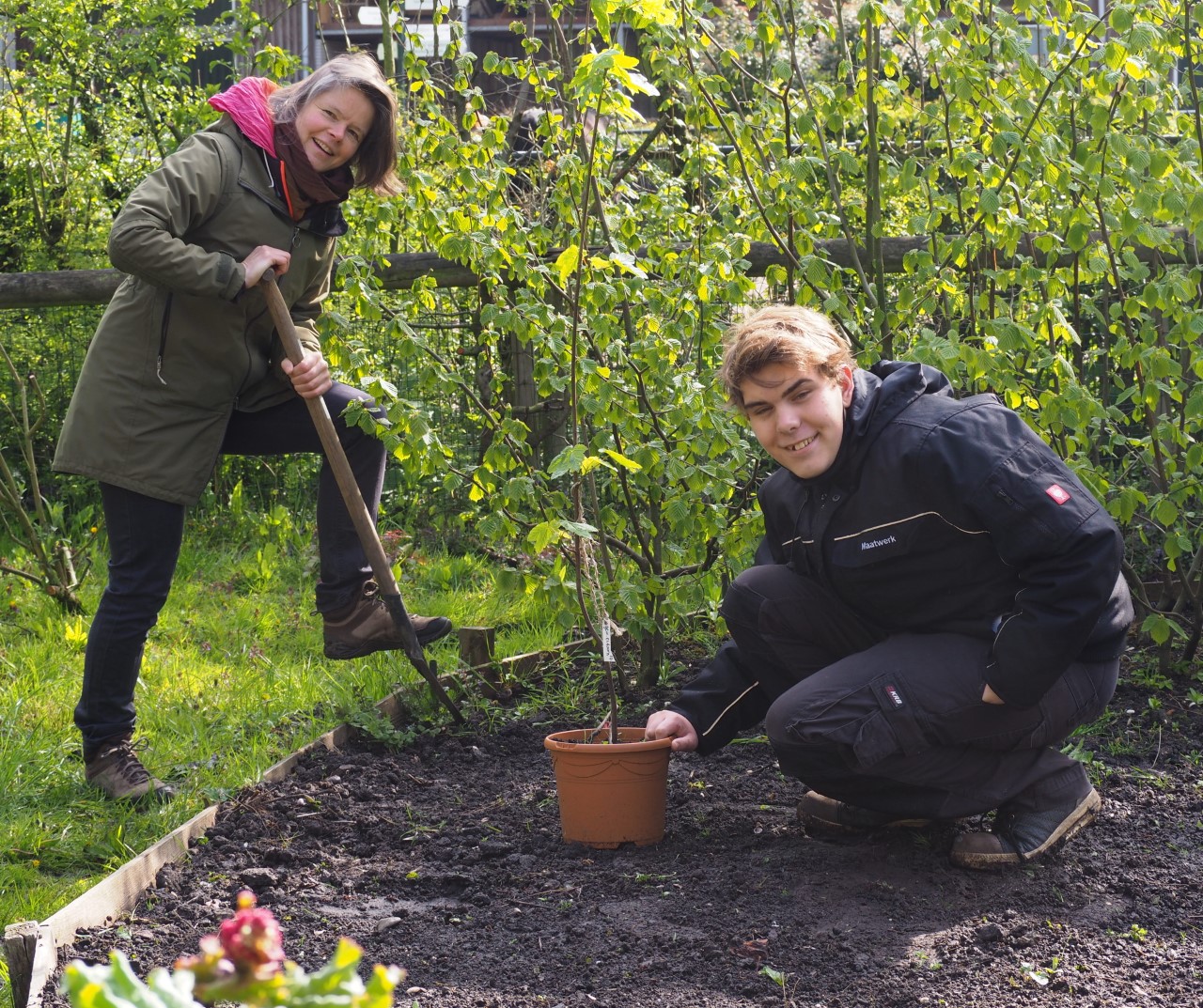MANUAL - ORGANISING HARVEST DAY
How to organise a Harvest Day!
The season runs from November 1st to March 1st, with a possible extension to March 15 if not all trees are distributed. During this time, the trees are in a dormant state, allowing for their safe relocation.
Harvesting is the first and most crucial step in the ‘More Trees Now’ process. After all, planting is impossible without harvesting. It’s logical! We are thrilled that you are interested in assisting us with the harvesting and rescue of saplings.
Harvesting is the first step in the More Trees Now process and also the most important one. After all, if you don’t harvest, you can’t plant. Logical! We are so glad you want to help us harvest and start rescue saplings with us!
MORE TREES NOW PROCESS
HARVESTING PHASE
How to organize a harvest event?
MANUAL - ORGANISING HARVEST DAY
Choosing your harvest location
Search for a Harvest Location
Harvest sites can be located by reaching out to the local forester or park keeper of your municipality. You can find ready-made letters in the communication toolkit! If the site’s ownership is unknown to you, consider contacting your local council or searching the national property registry. Forestry owners also have the option to register their location in the Tree Planner, indicating that harvesting is permitted there, but they will not be initiating any organisation on the harvest site. Feel free to send a message to an existing harvest site in the Tree Planner to collaborate on organising something.
COMMUNICATING WITH THE GROUNDSMAN OR FORESTER
Always open a dialogue with the forester or groundsman. It’s beneficial to discuss the harvest day and reassure them that the area will be treated respectfully. We only remove what is permitted (which aids the area!) and we ensure not to leave any litter or holes. Enquiries about practical matters, such as parking instructions, toilet facilities, and shelter in bad weather, are also encouraged.
It is beneficial to review any upcoming maintenance plans. Is a site scheduled for mowing or clearing? You might have the opportunity to rescue some saplings before that occurs.
EXAMPLES OF AGREEMENTS WITH A SITE MANAGER
- everything within a metre of the path
- all small trees of a certain species
- everything within half a metre of the parent tree may be removed
- clean up the heathland, peat bog, or other ‘tree-less’ landscape
ARE THERE ANY RISKS?
After a discussion with the site manager about which seedlings can be harvested, it’s crucial to consider potential risks. Are there specific diseases present in the area? If so, it might be best to avoid that area entirely, learn how to identify the disease, and/or suggest that before any sapling is definitively removed for replanting, the forester should conduct a final check.
Native versus Non-native Trees
Will you be working in multiple areas and need to select where to harvest?
Consider the various varieties or species available.
Pioneer species, including maples, willows, alders, and birches, are plentiful and frequently harvested. Maples are abundant at any given time, allowing you to shift focus to other species or sites if you have a surplus. Some desirable species include Hawthorn, Blackthorn, Elder, Buckthorn Trees, and Hazel. It’s important to note that we only harvest what is otherwise cut or actually in excess. If there is a solitary Hawthorn with a good chance of maturing, it naturally remains untouched! If you have multiple sites, and one has plenty of Maple trees while another has a variety of Elder and Hazel, you should prioritise the latter.
REGISTERING A NEW HARVESTING LOCATION
Have you discovered a new harvesting site? Excellent! Please register it in the Tree Planner. This allows you to look for volunteers, log planting locations, and record which trees have been saved and planted where. Be sure to include any information discussed with the forester. If you already have a Tree Planner account, navigate to ‘harvesting locations’ and click on ‘add location’ in the top right corner.
ECOLOGICAL GREEN MANAGEMENT
Franke van der Laan, the creator of the More Trees Now transplanting method, (based in the Netherlands) practises ‘ecological green management’. He removes a portion of the emerging seedlings (shoots) that are in disadvantaged locations: in the shade or in a growth spot unsuitable for the tree species. Special but slow-growing seedlings that Franke wishes to promote, are protected by removing the strong and fast-growing seedlings around them. Harvesting relatively few seedlings in a small space minimises soil disruption as it aligns closely with ecological processes. We avoid harvesting too many seedlings, as this would remove a generation of trees from a given area, leading to a loss of biodiversity. Properly practising ecological green space management can actually enhance biodiversity in the area. This does require a bit more knowledge.
MANUAL - ORGANISING HARVEST DAY
Preparation: What essentials are needed during a harvest day?
Materials List for a Harvest Day
For a harvest day, you will need the following materials:
Harvesting
- Spades or shovels
- Wheelbarrow
- Pruning shears if necessary
- Tarpaulin, burlap sacks or old towels to protect the roots of the trees
BUNDLING, LABELLING, REgistering
- Rope
- Labels
- Scissors
- Permanent marker
- A phone with the More Trees Now app / notebook and pen
- The Winter buds chart
VISIBILITY
- Flag
- More Trees Now vests (if available)
- Posters, flyers, and press releases from the communication toolkit
TRANSPORT (IF ANY)
- Car with towbar
- Trailer
WHERE DO YOU GET THese materials?
- A lending depot: in many places you can borrow materials from the local forestry groups.
- The local shop: rope, scissors and markers you may already have in your house or you can find in any regular shop.
- From the volunteers themselves: When creating a harvesting event in the tree planner, you can see which volunteer in the area has some. Volunteers are typically asked to bring their own spade and/or pruning shears.
Organising your HARVEST EVENT IN THE TREE PLANNER: WHAT SHOULD VOLUNTEERS BRING?
You have selected your harvest site, agreed on the day’s conditions with the site manager, and gathered most of your materials. Now it’s time to choose a date and plan the day!
In the Tree Planner, navigate to your harvest location, click ‘add event’, and choose a date and time. Here, you can also make detailed arrangements with the forester and specify your preferences, such as the maximum number of volunteers you want and whether they should bring their own lunch. An outline is available in the Tree Planner when you create your event, but remember to personalise the text.
Once volunteers sign up, they will receive all the information you have provided, ensuring they are fully informed. Finally, in the event, you can view a list of all registered volunteers, along with their contact details. The Tree Planner also allows you to send updates to volunteers or initiate a chat that automatically includes all event volunteers.
In the volunteer list, you can view any additional information volunteers have provided. They may have indicated ownership of their own spade, pruning shears, wheelbarrow, or a trailer they can bring or expressed a desire to assist with event organisation. You can message them to request they bring specific items or perform certain tasks, such as transporting the trees to the next location.
Once volunteers have registered, they will receive all the information you have provided, ensuring they have a comprehensive understanding. In the event area, you can view a list of all the volunteers who have signed up, along with their contact details. Through the Tree Planner, you also have the option to send updates to the volunteers or initiate a conversation in the chat that is automatically available to all the volunteers from your event.
Arranging transport post-harvest: where do your saplings go?
You have two options: planting locations can register for your event to collect the trees immediately (you can specify the number of people who can do this when you create your event), or the saplings can be sent to a Tree Hub. This is the usual procedure for most days. It’s best to organise this beforehand. To do so, contact a Tree Hub and/or a (large) planting location near your harvest site. Refer to step 5 for further details!
Create a buzz: recruit volunteers for your harvest day!
Every Wednesday evening at 6pm CET, all individuals registered in the Tree Planner will receive a message containing all the events currently scheduled within a 25-kilometre radius of the Tree Planner.
Upon creating an event in the Tree Planner, you automatically generate a sign-up link for the event. In most instances, some promotion is necessary to have enough volunteers. Anyone, whether already in the Tree Planner system or not, can sign up for your event through this link. Consider sharing it with your own network, family, friends, and on social media. Consider reaching out to local newspapers, environmental groups, nature groups, associations, schools, or other groups in your area.
Is the influx of volunteers still a bit slow? Then consult with the forester or the organisation. Perhaps there is too much competition with other events in the area, or there aren’t many volunteers in your region yet. We can work on this together.



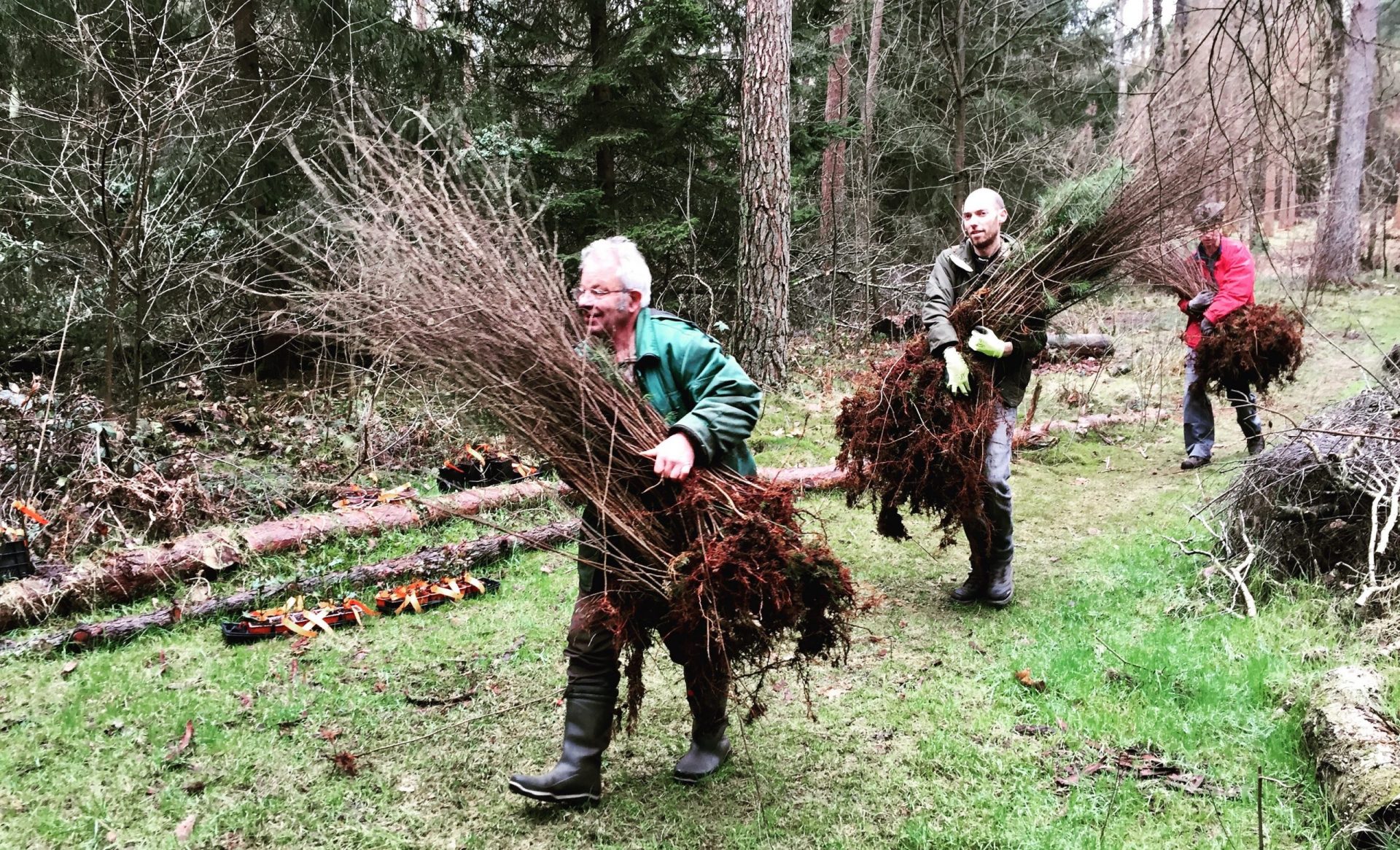
MANUAL - ORGANISING HARVEST DAY
It's Harvest Day: let's save some trees!
Welcome |
Explain the More Trees Now method to the participants. Also consider inviting the owner, or forester to give an introduction about the terrain from which you will be rescuing saplings from. |
|---|---|
Let's get started! |
Volunteers begin by scooping out the saplings or taking cuttings from overgrown bushes. The organiser periodically walks around to answer questions. |
Optional: Break for tea! |
Depending on how long your event is, have one or two breaks. Bring a thermos of tea and possibly some sweets to pass around. |
Break |
Have a lunch break or a second break, depending on the length of your event. Explain how to sort, bundle, and label the rescued saplings. Divide the volunteers, some can take a break, while others can continue harvesting. |
Final sprint |
Now that everyone is a seasoned harvester, you can really boost those numbers. Let’s save as many as possible! |
Ending the day |
Once all the saplings are bundled and labelled, load them into the vehicle that will transport them to the Tree Hub or planting location, or heel them in. Count the number of saplings you have saved as you place the bundles of saplings in the trench or trailer. Register this in the app, or write it down to input into the Tree Planner later. Alternatively, agree with the Tree Hub that they will register this batch. Tidy up the site, leave no mess or holes, and don’t forget to thank your volunteers! |
THE WELCOME
It will be beneficial if you arrive a bit earlier than the volunteers. Position the flag or another identifiable object along the road or at the meeting point so everyone knows where to proceed. Put on a visibility vest to clearly indicate that you are the point of contact.
Introductions
Are all the volunteers present? Familiarise yourself with them and have them briefly introduce themselves to one another. Following this, you can pose some questions and highlight points of interest.
- Who is attending for the first time?
- Is anyone planning to leave early today, or are we expecting additional people?
- Please note! Volunteers can communicate with you via the More Trees Now app if they arrive later. So, check the app before starting.
- Briefly explain the programme and the More Trees Now method.
- Briefly outline the conditions of the site: the forester may wish to do this!
- Check that everyone has the necessary gear.
- You might want to distribute bud cards to some individuals; perhaps save that for the sorting portion of the day.
- Ask the group for permission to post photos on social media.
- e necessary gear.
- You may want to give some people a bud card, perhaps save that for the sorting part of the day.
- Ask the group for permission regarding photos for social media.
THE HARVESTING
You harvest in accordance with the arrangements agreed upon with the forester. Ensure that the group of volunteers is a mix of those who are attending for the first time and those who are more experienced. Participate in the harvesting yourself, but also walk around to ensure everything is going well. Are holes properly filled and tamped down? Are seedlings safely laid out and sorted? Don’t forget to take a few photos.
It’s a good idea to demonstrate the process of harvesting a seedling. Dig a circle around the seedling, about a foot from the stem. Use your spade as a lever – it’s less stress on your back! Pry the seedling loose and shake it out. After all, there is no need for a big clod of earth! We aim to leave the forest, estate or park even more beautiful than we found it. Therefore, we carefully extract the seedlings, leaving only the most beautiful ones behind.
We harvest seedlings between 50 and 150 centimetres, as these have the best chance of survival. We only remove trees that cannot grow into large trees at that location or are undesirable for other reasons. So, larger trees are better left standing! These do not survive the transplanting process as well.
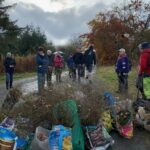

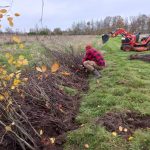
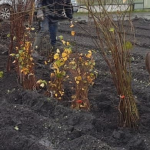
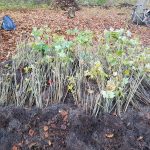
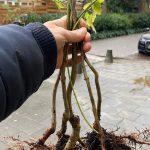
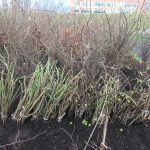
CUTTINGS, SHRUBS AND PRUNED TREES
Cuttings are also welcome! You can stick a branch of a Willow, Poplar, Elder, Butterfly bush or Fig into the ground, from which a new tree or shrub can sprout.
- Elder, Butterfly bush, Fig, and Grape: trim back the woody parts into segments of approximately 50-60 centimetres (or 4 nodes) and place them with the underside in water or in the soil to prevent them from drying out. Cuttings with a diameter of 2 cm are most suitable.
- Poplar and Willow: cut or trim at an angle, ideally 2-3 metres long, because if you wish to plant them, they must be inserted at least 50 centimetres into the ground.
- Runners of Blackberry, Raspberry, Ribes, and Gooseberry: cut them along with their roots.
COVER THE ROOTS
It is always prudent to protect the roots immediately. Gather your seedlings in large bundles, possibly sorted by species (see also sorting, step 4). Be aware that roots can dry out in the sun and wind, so place them in a sheltered spot in the shade. Ensure something is covering the roots, such as leaves, a tarp, a jute bag or an old towel. You can dampen this old towel or burlap sack to keep the roots moist. If there is a stream nearby, you could even temporarily place the seedlings’ roots there for added protection.
BREAKS AND FAREWELLS
During the breaks, assess how the volunteers are doing. What challenges are they facing, and what is going smoothly? This is also a good time to review bundling, labelling, counting and recording (step 4). All seedlings should be bundled in bunches of 20 to 50 per bunch. This makes them easier to count and transport. Volunteers who are tired of harvesting can begin this task. As you load the bundles onto the trailer, count them and input the numbers directly into the More Trees Now app; remember to specify the trailer’s destination. Remember to express a hearty thank you to everyone at the end of the day! Before leaving, conduct a walk-through of the site to ensure that no shovels are left behind, and the site is left tidy (no holes in the ground, no rubbish, and any materials are tidy).

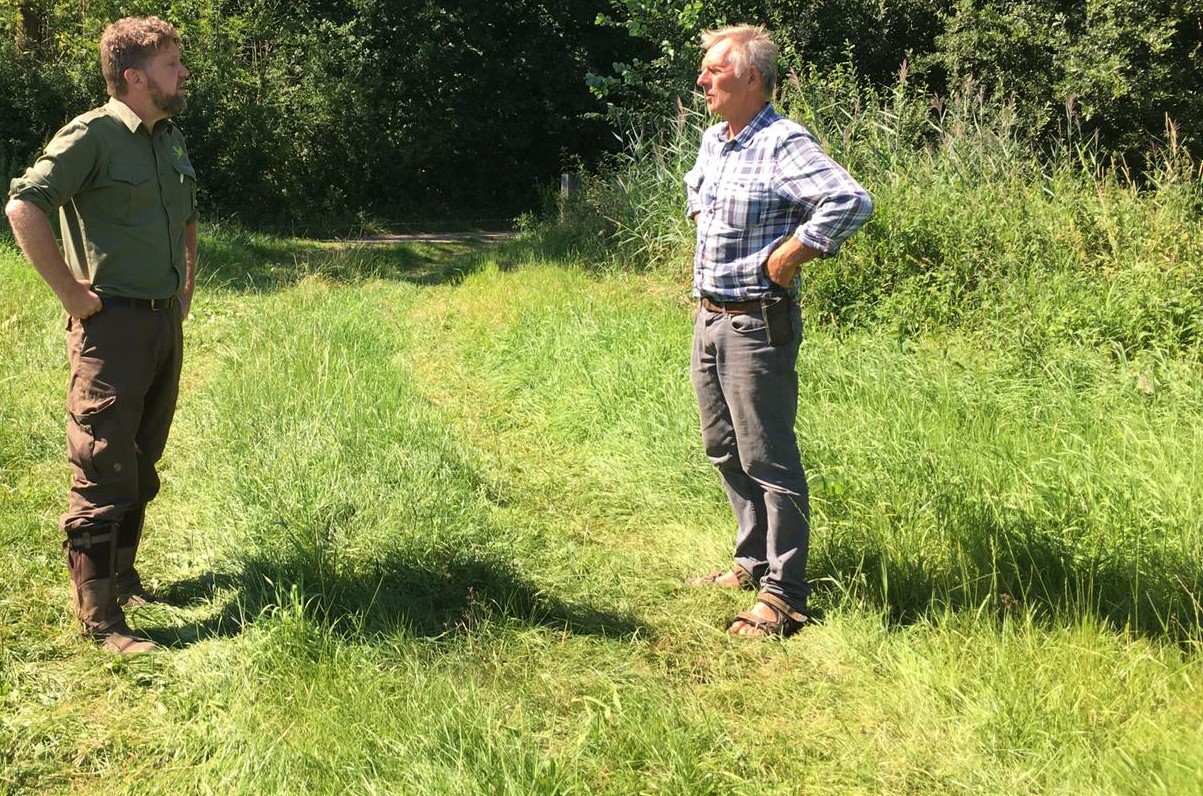
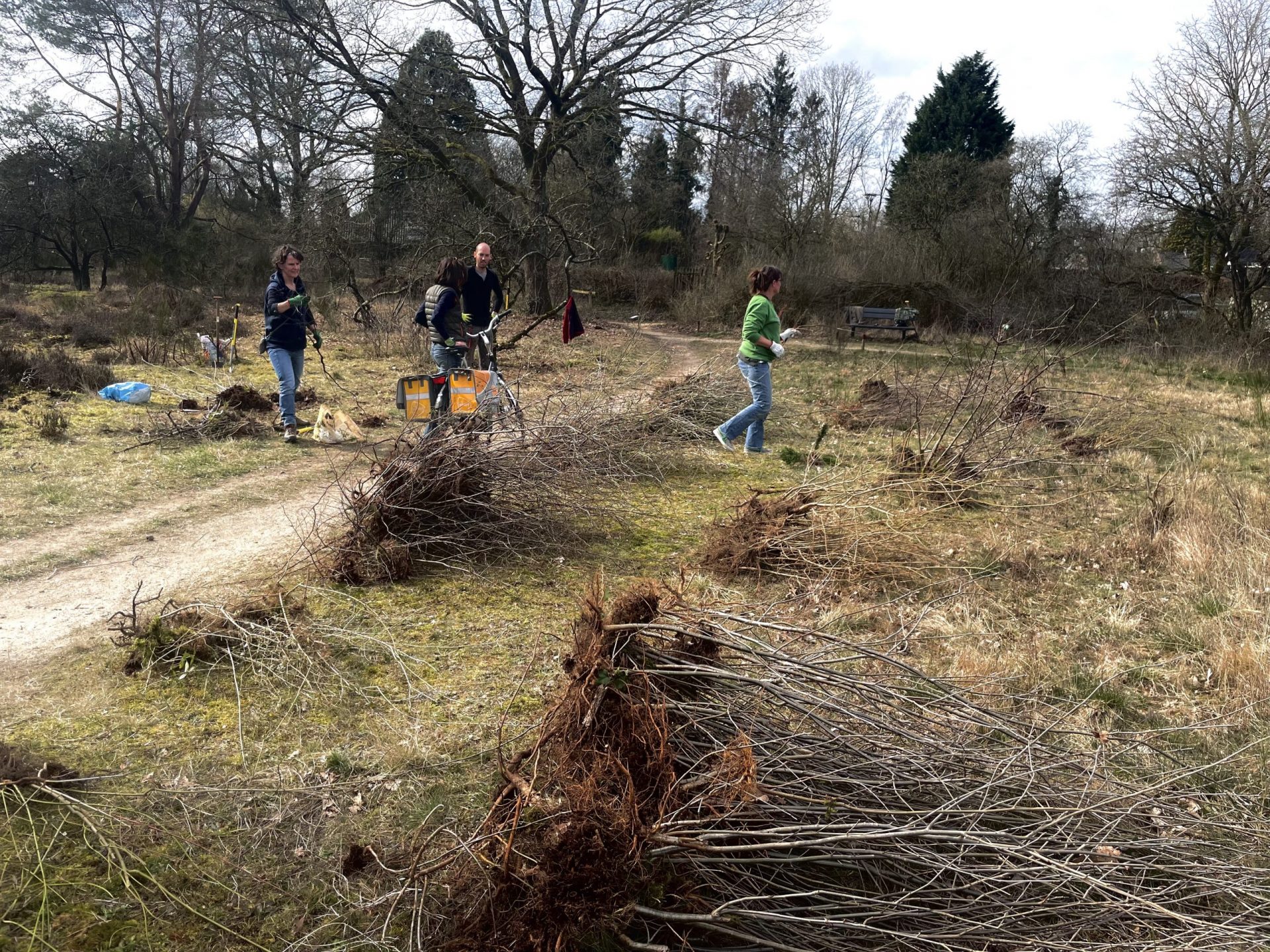
MANUAL - ORGANISING HARVEST DAY
Sorting, bundling, labelling and registering the saplings!
Sorting
Even if you’re good at identifying trees, sorting can be challenging. In winter, the saplings have no leaves, so one can only recognise the saplings by their buds. We recommend using a bud chart, which makes identifying the most common species easier. Often, the manager of the harvesting location will tell you which species can be removed that day. So, focus on just a few species, as this makes it much easier! If you focus on 3 species, you only need to identify 3 species.
Or check out some of these publicly available videos on the identification of UK and Irish trees in wintertime!
Tree video's
Bundling
Secure the seedlings in groups of 20 or any other consistent number of saplings. This will simplify the final count. Bundle the saplings with the roots at the same height to facilitate easy heeling in.
Do this using as little rope as possible. Follow these steps:
- Hold the rope against the bundle.
- Tie a loop at the end.
- Wrap the string around the cluster of seedlings.
- Thread the end through the loop.
- Pull it tight.
- Make a tight knot.
- Trim off the excess string.
- Attach a label indicating the name of the seedling and the number of seedlings.
Register
Once you have bundled and labelled the species, you can tally and record them. You can do this in the More Trees Now app. Here, you indicate on the spot, which species and what quantity you will give to which place (a planting location, a Tree Hub or a volunteer). Not so keen on apps? You can also keep track of this in a notebook, and enter it in the Tree Planner at home at the end of the day.

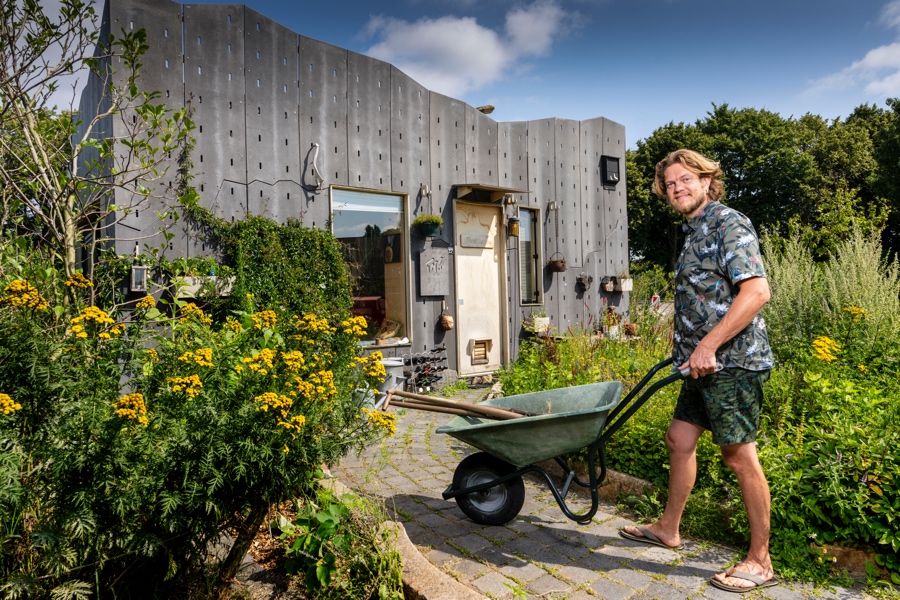
MANUAL - ORGANISING HARVEST DAY
Transport the harvest: give-away or heeling in.
Your harvested seedlings have been counted, bundled and sorted. Now they are ready to be transported to their next destination!
From Harvest Site to…?
Once you’ve bundled and sorted all your little trees, they need to go somewhere.
Transport to a planting location
Planting locations can register for a harvest day in the Tree Planner. This ensures that as many trees and shrubs as possible are gathered immediately. It’s common for volunteers to also take a tree home.
Sometimes it is a few planting locations that show interest. Should you be in a position to give a lot of attention to your harvest day, for instance on social media, you may find that many planting locations appear at the end of the day. Consider the possibilities in advance. Planting locations can apply for a time slot in the last few hours of your harvest day, for which you can set a maximum number of collectors.
Occasionally, a few planting locations may express interest. If you’re able to promote your harvest day extensively, for example on social media, you might find that many planting locations turn up by the end of the day. Consider the options in advance. Planting locations can request a time slot in the final hours of your harvest day, for w
You can also reach out to them directly: in the Tree Planner, you can view all the planting locations in your area on the map. Select the largest ones and send them a message: would they be interested in taking all your harvest at once? This approach saves on transport and storage.
Please note: Be mindful of which sapling you distribute to planting locations. Avoid giving a sapling that could grow 30 metres tall to someone with a balcony. An average harvest day usually involves around 10 species, so a quick Google search will help you identify the types of trees you have on hand!
Transport to tree hubs
A Tree Hub is a collection point for surplus saplings. They are stored, cared for, and redistributed, thereby giving them a second chance Read more about Tree Hubs.
When planning your harvest day, it’s always beneficial to get in touch with a nearby Tree Hub. Any saplings not directly picked up by planting sites need a safe haven. Heeling in can be quite a task, so it’s always worth asking your volunteers if they can assist at the Tree Hub.
If your car doesn’t have a tow bar, it’s crucial to coordinate with the Tree Hub on how the harvest will be transported. If the Tree Hub doesn’t collect it, a volunteer driver must be arranged. Volunteers can indicate whether they’re willing to drive and if they have a tow bar, just as they would indicate if they have a spade. Many Tree Hubs may have their own trailers.
If there isn’t a Tree Hub available to collect the trees on the same day, consult with the forester. Maybe you could dig a trench near the car park’s edge for the day’s harvest. This way, it might be collected later by a planting site or Tree Hub.
